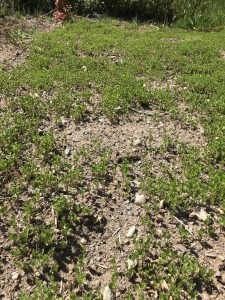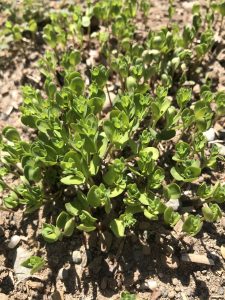As my flax continues to grow, the bald spots that I originally noticed after germination have been looking even more profound. I was pretty stumped on why they so much of the seeds didn’t germinate. If anything I thought that the seeding would be too dense and I would have problems further down the road. However, while reading different science journals about flax propagation, I think I may possibly have an explanation for what happened.

While sowing, even though I am pretty positive I did the calculations correctly, I had too much seed to properly cover all of them with soil. I was expecting the seed at the top of the soil to be the unsuccessful ones, so, I was surprised to find that the patches of seed that I was unable to cover seemed to be to seed that actually germinated.
I read that flax seed is particularly sensitive to soil crusting. After doing a bit more research into soil crusting, I found that it is defined as a thin layer on the surface of the soil that is thicker than the rest. This makes it difficult for seeds to break through before they begin to rot. Oftentimes, heavy rainfall can be responsible for compacting the soil.

I sowed my flax seeds on April 10, so, I went back and checked the rainfall after that. On April 13 – 14th there was a period of time that saw 3 inches of rainfall, which is above average even for here. If I remember correctly, it was pretty heavy downpour as well. With this new information, I am guessing that this could definitely have something to do with the germination problems that I saw a few days after that rain. Despite that, much of the flax I grew continues to flourish and I believe it is about to take off given the warm weather that will hopefully last the rest of the season!